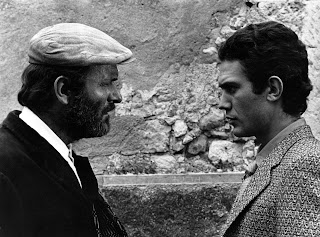Pope Urban VII
Pope for just 12 days but introduced world's first smoking ban
Pope Urban VII was born Giovanni Battista Castagna on this day in 1521 in Rome. Although his 12-day papacy in 1590 was the shortest in history, he is remembered as being the first person in the world to declare a ban on smoking. He was against the use of tobacco generally, threatening to excommunicate anyone who ‘took tobacco in the porchway of, or inside a church, whether it be by chewing it, smoking it with a pipe, or sniffing it in powdered form through the nose’. The ban is thought to have been upheld for the most part until 1724, when Pope Benedict XIII, himself a smoker, repealed it. Castagna was the son of a nobleman of Genovese origin and studied in universities all over Italy. He obtained a doctorate in civil law and canon law from the University of Bologna. He served as a constitutional lawyer to Pope Julius III and was then ordained a priest. He took part in the Council of Trent and then served as an apostolic nuncio in Spain for four years. Castagna was also Governor of Bologna, apostolic nuncio to Venice and then Papal Legate to Flanders and Cologne. He is remembered for his charity to the poor. Read more…
_____________________________________
Giovanni Spadolini - politician
The first non-Christian Democrat to lead Italian Republic
Giovanni Spadolini, who was the Italian Republic’s first prime minister not to be drawn from the Christian Democrats and was one of Italy's most respected politicians, died on this day in 1994. In a country where leading politicians and businessmen rarely survive a whole career without becoming embroiled in one corruption scandal or another, he went to the grave with his reputation for honesty intact. Although he was an expert on Italian unification and became a professor of contemporary history at the University of Florence when he was only 25, a background that gave him a deep knowledge of Italian politics, he first built a career as a journalist. He became a political columnist for several magazines and newspapers, including Il Borghese, Il Mondo and Il Messaggero, and was appointed editor of the Bologna daily II Resto del Carlino in 1955, at the age of 30. In 1968, having doubled Il Resto’s circulation, he left Bologna to become the editor at Corriere della Sera, in Milan, where he remained until 1972. It was while editing the Corriere that he became known for his anti-extremist stance, condemning violent student activists on the left and terrorists on the right in equal measure. Read more…
____________________________________
Lorenzo di Pierfrancesco de’ Medici - banker
Art enthusiast who was Botticelli’s major patron
The Florentine banker and politician Lorenzo di Pierfrancesco de’ Medici, who was a significant figure in Renaissance art as the main sponsor and patron of the painter Sandro Botticelli, was born on this day in 1463. The great-grandson of Giovanni di Bicci de’ Medici, the founder of the Medici bank, Lorenzo di Pierfrancesco belonged to the junior, sometimes known as ‘Popolani’ branch of the House of Medici. In 1476, when he and his brother, Giovanni, were still boys, their father, Pierfrancesco de’ Medici the Elder, died. They became wards, effectively, of their cousin, Lorenzo il Magnifico - Lorenzo the Magnificent - a member of the senior branch of the family and the effective ruler of Florence. Relations between the two branches had been tense for some years and were not helped when Lorenzo di Pierfrancesco discovered, on becoming an adult, that Lorenzo had plundered a considerable sum from he and his brother’s joint inheritance in order to stave off a threatened bankruptcy of the family’s financial empire. Although Lorenzo had provided the boys with the best education money could buy - the notable Florentine Renaissance humanists Marsilio Ficino, Angelo Poliziano and Giorgio Antonio Vespucci (uncle of Amerigo) were among their tutors - and given them a number of properties in compensation, the incident created a lingering bitterness. Read more…
______________________________________
Book of the Day: Absolute Monarchs - A History of the Papacy, by John Julius Norwich.
In Absolute Monarchs, a chronicle that captures nearly two thousand years of inspiration and intrigue, John Julius Norwich recounts in riveting detail the histories of the most significant popes and what they meant politically, culturally, and socially to Rome and to the world. Norwich presents such popes as Innocent I, who in the fifth century successfully negotiated with Alaric the Goth, an invader civil authorities could not defeat; Leo I, who two decades later tamed (and perhaps paid off) Attila the Hun; the infamous "pornocracy"- the five libertines who were descendants or lovers of Marozia, debauched daughter of one of Rome's most powerful families; Pope Paul III, "the greatest pontiff of the 16th century," who reinterpreted the Church's teaching and discipline; John XXIII, who in five short years starting in 1958 instituted reforms that led to Vatican II; and Benedict XVI, who had to contend with a modern global priest sex scandal. Epic and compelling, Absolute Monarchs is an enthralling history.John Julius Norwich was the author of more than 20 books, including the New York Times bestseller Absolute Monarchs. He began his career in the British foreign service, but resigned his diplomatic post to become a writer. He was a chairman of the Venice in Peril Fund and the honorary chairman of the World Monuments Fund. He died in 2018.
.jpg)

.jpg)

.jpg)

.jpg)
.jpg)






.jpeg)


.jpg)
.jpg)
